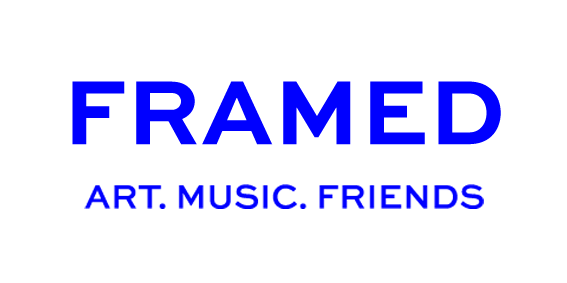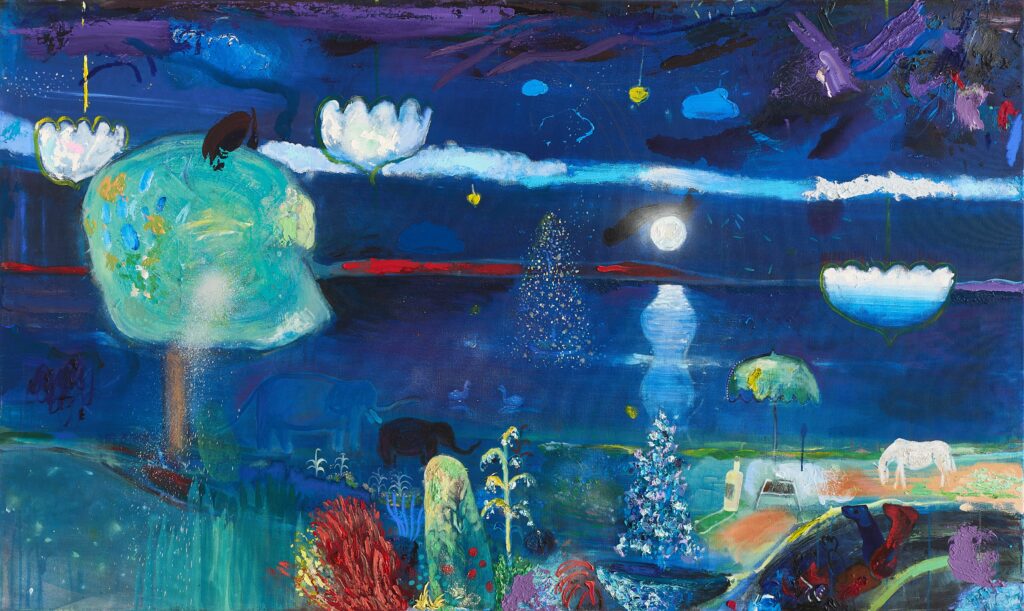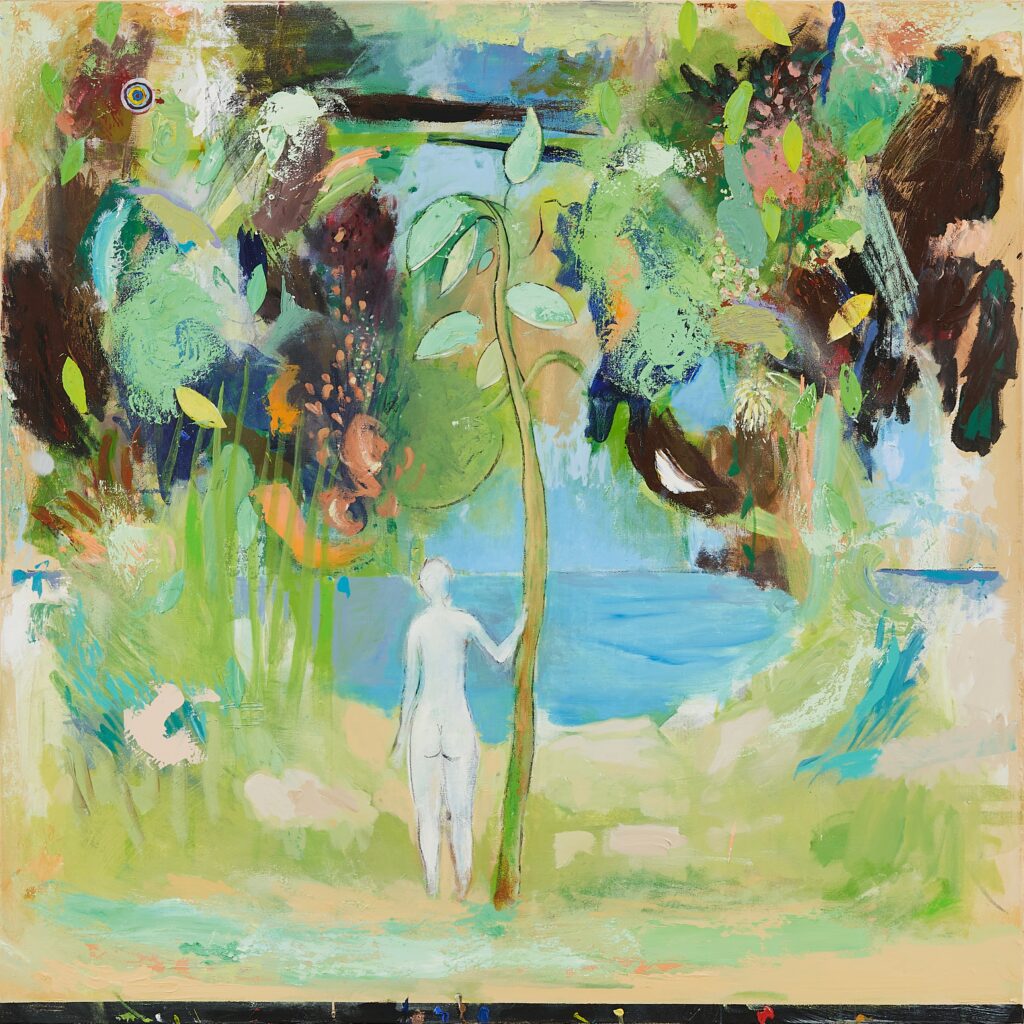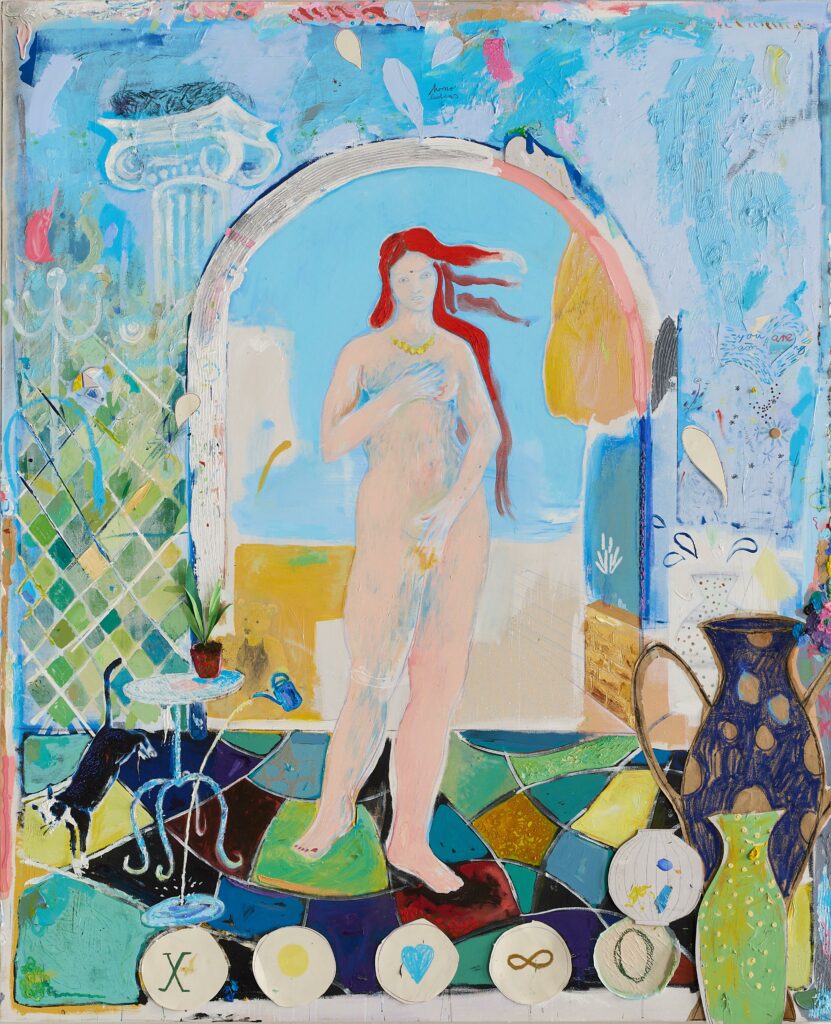The Wedding Of The Butterflies – by Carlo Leopold Broschewitz
Carlo Leopold Broschewitz –
Letting go and allowing
by Julia Globig, art historian
Sculptor and painter Carlo Leopold Broschewitz lives and works in Kambs in Mecklenburg and in Leipzig. His works are like a large playground where animals and humans meet – where conventions are disregarded – where beauty and bizarreness go hand in hand – where every thing, every figure and every form has its justification and goes its own way without being asked. Carlo’s signature is an unmistakable liveliness with which his dreamy pictorial worlds come into contact with us.
During his training as a stone sculptor, the artist dealt intensively with the fundamentals of the human image. Since studying sculpture at Burg Giebichenstein in Halle an der Saale, the Rostock-born artist has sought his own path – and continues to find it. Carlo Leopold Broschewitz’s dream worlds are now shared by life-size wooden sculptures, whose form is created by working with a chainsaw, and figurative paintings, bronze and ceramic objects. Carlo’s works tell stories of freedom, interpersonal encounters and longings. They do not allow themselves to be confined within the boundaries of genre definitions, but downright rebel against all localization. They merely follow their own urge for self-determination and processuality. Carlo constantly gives in to this demand in his works. The change of material means a further development that benefits this demand. Sculptural work is conditioned by painting and vice versa. By combining materials in sometimes unusual ways, they constantly unfold new possibilities for formulating themselves. Carlo’s graphic strokes can thus be found on canvas, wood, ceramics or textiles and navigate the viewer through narrative visual worlds. Carlo leaves the structure of form and narrative to his intuition. The fact that his work thrives on this is the result of a learning process and a longing for unpredictability and (personal) freedom. Since then, completion has taken a back seat to his artistic concerns. How long a work takes to create and in which direction it will develop are variables that are deliberately beyond Carlo’s control. Rather, he is getting rid of mental boundaries, trying to leave conventions behind and shake off the feeling of discomfort associated with them. The aim of his work is by no means to work through a style or content, but rather to let go, to react to coincidences and to surrender completely to the excitement of the event itself.
The unconstrained is therefore not only the subject of many works, but also part of the formal development. The stories told to the viewer with each work are glimpses into imaginary spaces. They contain pastel-drawn worlds of light, symbolism and unexpected constellations. The images of figurative characters and their positioning in relation to each other and to the space are recurring. The presence of expectations and fears play just as great a role as the striving to get rid of them. Carlo’s art is not committed to acting politically or even morally, but to reminding people of what it means to be human. In both sculpture and painting, he succeeds in capturing proximity and distance in scenic images, revealing and dissolving the conditions associated with them. The longing for magic and the desire for instinctive action and expectation-free relationships are reflected in repeatedly depicted encounters between the human and the animal.
Carlo Leopold Broschewitz surprises himself when entering his emerging pictorial worlds with wondrous forms of expression or enraptured realities. The conscious is in constant dialog with the subconscious and opens doors to the desired freedom for both the artist and the viewer. Nothing stands in the way of abstract forms, lines or objects.
What wants to emerge is allowed to emerge.





